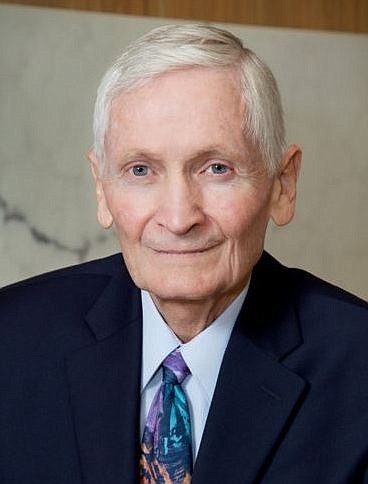Op-Ed: Bringing extremism under control
America has a serious problem with extremism, as evidenced by the Jan. 6 attack on the U.S. Capitol. The country has a wide range of extremist groups — the Proud Boys, Boogaloo Bois, Three Percenters, Oath Keepers, Ku Klux Klan, QAnon — and an assortment of individuals caught up in white supremacy, conspiracy theories and anti-government activities. What can we do about it?
We need to recognize that our country has always had extremist elements, the secession of the southern states after the 1860 election being the foremost example. U.S. extremists cannot be eliminated but they can be brought under control through the concerted efforts of people of good will. That was clearly demonstrated by the way Idaho dealt with the Aryan Nations hate group beginning in the early 1980s.
When the Aryan Nations began marching and spewing its message of hatred in Coeur d’Alene, community leaders like Father Bill Wassmuth, a Catholic priest, stepped forward to counter that message with one of unity, love and understanding. Marilyn Shuler, head of the Idaho Human Rights Commission, and other state officials joined the effort. Local and state law enforcement monitored the activities of the group and the dangerous individuals it attracted to the state.
A critical turning point came when Idaho business leaders realized the damage that the Aryans and their fellow travelers were causing to Idaho’s image and, consequently, to their bottom lines. They let it be known to elected officials in the majority party that they needed to speak out against the Aryans. The united message from the highest elected leaders that white supremacists were not welcome and would not be tolerated in Idaho sucked much of the air from the racist group.
Toleration of racism gives oxygen to extremists, while strong public disapproval discourages all but the hard core. The true believers require aggressive monitoring and prosecution, while education and persuasion may work with the less-committed members.
A recent controversy arose when Dan Prinzing, executive director of the Wassmuth Center for Human Rights, accepted a monetary donation from the Real 3%ers of Idaho to repair vandalization of Boise’s Anne Frank Memorial. The group made the donation after Prinzing explained the significance of the memorial and its mission to advance the cause of human rights. Some saw this as a sell-out to apparent extremists. I disagree.
Something similar happened after Father Wassmuth’s home in Coeur d’Alene was bombed by Aryan terrorists in 1986. The Idaho Criminal Justice Council asked the 1987 Legislature to pass a bill to crack down hard on terrorist bombers. The original bill was defeated by a 52-31 House vote, due to opposition by the National Rifle Association. The NRA had already strayed from its traditional gun safety/education role by then, but had not yet turned into the hard-right tool of the gun industry it is today.
Although I harbored few good thoughts about the NRA, I reached out to see if we could agree on language to revive the legislation. To my great surprise, the NRA representatives proposed language that went much broader than we had proposed or even thought possible to protect people from violence or denial of protected rights. The Terrorist Control Act is still Idaho law and would not have been possible without a collaborative effort with an unlikely partner.
There are members of extremist groups who can be persuaded to disengage from their violent fellows and we should not fail to work with them. David Kilcullen, a noted counterterrorism expert, urges that we combine tough enforcement against violent offenders with “disaggregation” of those who are non-violent. Dan Prinzing did the right thing.
• • •
Jim Jones served as Idaho Attorney General from 1983 to 1991. In 1987, he received the Torch of Liberty Award from the Pacific Northwest Anti-Defamation League for his human rights work.

